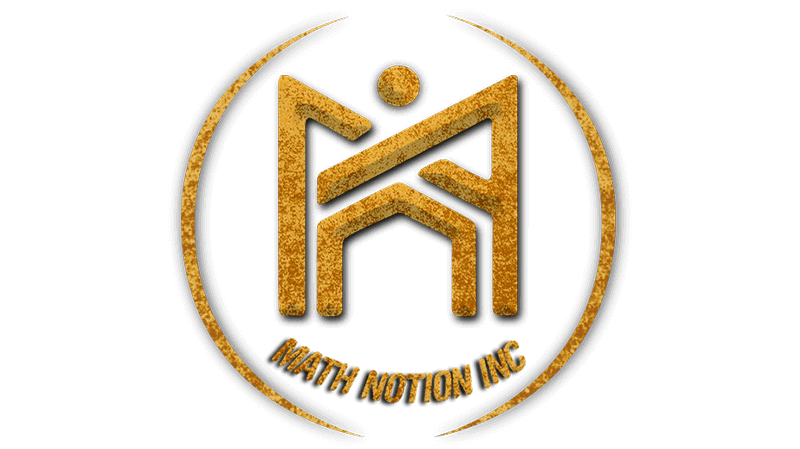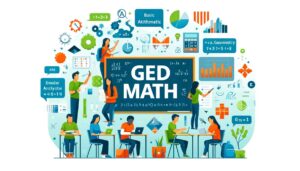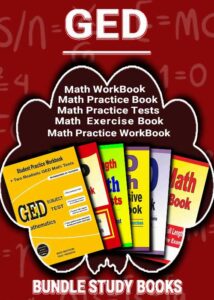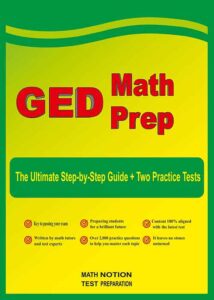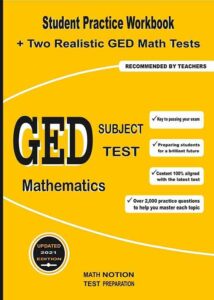
Unlock the Answers: “GED Math for Beginners” Solution Manual
Understanding the Basics of GED Math
The General Educational Development (GED) test is a critical milestone for many seeking to advance their education or career prospects. Among the various sections of the GED, the math component often presents significant challenges for beginners. This article aims to provide a comprehensive solution manual explicitly tailored for those new to GED math, covering essential concepts and offering detailed solutions to common problems.
Before diving into problem-solving, it’s crucial to grasp the fundamental concepts that form the backbone of the GED math section. These include:
Arithmetic and Number Operations
At the core of GED math are basic arithmetic operations: addition, subtraction, multiplication, and division. Mastery of these operations is essential as they form the foundation for more complex problems.
- Addition and Subtraction: The most basic operations involve combining or removing quantities.
- Multiplication and Division: These operations involve scaling numbers up or down, which is essential for coping with proportions and ratios.
Fractions, Decimals, and Percentages
Understanding how to manipulate fractions, decimals, and percentages is critical. This includes converting between these forms and performing operations with them.
- Fractions: Focus on simplifying, adding, subtracting, multiplying, and dividing fractions.
- Decimals: Learn to convert fractions to decimals and perform arithmetic operations.
- Percentages: Grasp how to calculate percentages and solve problems involving percentage increases or decreases.
Algebra and Functions
Algebra is a significant component of the GED math test. Beginners should be comfortable with the following:
- Variables and Expressions: Understanding how to work with unknowns and construct algebraic expressions.
- Equations and Inequalities: Solving linear equations and inequalities.
- Functions: Grasping the concept of a function and interpreting function notation.
Geometry and Measurement
Geometry involves understanding shapes, their properties, and measurements. Key areas include:
- Properties of Shapes: Knowing the characteristics of shapes such as triangles, quadrilaterals, and circles.
- Perimeter, Area, and Volume: Calculate various shapes’ perimeter, area, and volume.
- Coordinate Geometry: Plotting points and interpreting graphs on the coordinate plane.
Data Analysis and Probability
Data analysis involves interpreting data from charts, graphs, and tables, while probability covers the likelihood of events occurring.
- Charts and Graphs: Reading and extracting information from bar graphs, histograms, pie charts, etc.
- Probability: Understanding basic probability concepts and calculating the probability of simple events.
Problem 1: Basic Arithmetic Operations
Question: Solve
Solution: First, follow the order of operations (PEMDAS/BODMAS):
- Multiplication and Division (from left to right):
- Addition and Subtraction (from left to right):
Answer:
Problem 2: Working with Fractions
Question: Simplify .
Solution:
- Find a common denominator for the fractions, which is 9.
- Convert to .
- Add the fractions: .
Answer: or
Problem 3: Solving Linear Equations
Question: Solve for : .
Solution:
- Add 3 to both sides: .
- Divide both sides by 2: .
Answer:
Problem 4: Geometry – Area and Perimeter
Question: Find the area and perimeter of a rectangle with length 7 units and width 4 units.
Solution:
- Perimeter: units
- Area: square units
Answer: Perimeter = 22 units, Area = 28 square units
Problem 5: Data Interpretation
Question: If a bar graph shows that 60 people like apples, 45 like oranges, and 30 like bananas, what is the total number of people surveyed?
Solution: Add the number of people who like each fruit:
Answer: 135 people
Tips for GED Math Success
Practice Regularly
Consistent practice is key to mastering GED math. Use various resources, including practice tests, workbooks, and online tutorials, to reinforce learning.
Focus on Weak Areas
Identify and target your weak areas. Spend extra time on challenging topics and seek help if needed.
Use Visual Aids
Utilize visual aids such as graphs, charts, and diagrams to understand complex problems better. Drawing can also help visualize and solve geometry problems more efficiently.
Learn Test Strategies
Familiarize yourself with test-taking strategies, such as eliminating obviously wrong answers and managing your time effectively during the exam.
Preparing for the GED math test can be daunting, especially for beginners. However, with a solid understanding of the basic concepts, regular practice, and effective study strategies, you can overcome these challenges and achieve a high score. This solution manual provides the foundational knowledge and problem-solving techniques for success in GED math.
